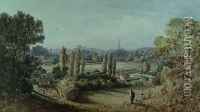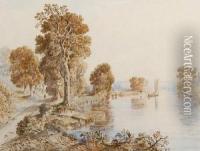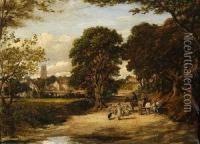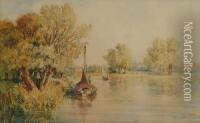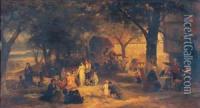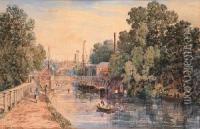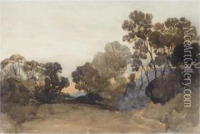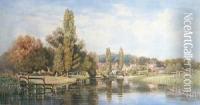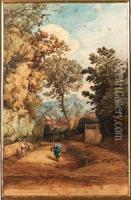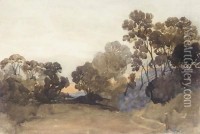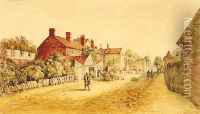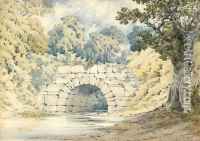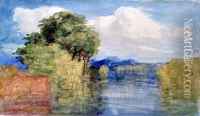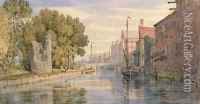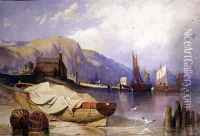John Joseph Cotman Paintings
John Sell Cotman was an English landscape painter, etcher, illustrator, and a leading member of the Norwich school of artists. Born on May 16, 1782, in Norwich, Cotman displayed an early talent for art which led him to London in 1798 to pursue his career. He became a member of the Academy of Great Britain where he exhibited regularly. Despite his association with London, Cotman's most significant work was produced in his native Norfolk.
Cotman is renowned for his landscapes that often featured water, boats, and architectural subjects. His style was characterized by a refined use of color and a delicate handling of light. He was adept at both watercolors and oils, but it is his mastery in watercolor that marked his place in art history. Cotman's work is distinguished by a sense of tranquility and a mastery of the depiction of light and reflection on water.
In 1806, Cotman returned to Norwich and became a prominent figure in the Norwich School of painters, which was the first provincial art movement in Britain. The Norwich School artists were united by their shared interests in landscape painting and the Norfolk countryside. Cotman became a leading figure in the school, which also included artists like John Crome and Joseph Stannard.
Cotman struggled financially throughout his life, which led him to take up teaching. He published several instructional books on drawing and made a significant contribution to the art of lithography. He became a prominent drawing master in Norwich and later, in 1834, moved to London to take the position of Master of Landscape Drawing at King's College School.
Despite his contributions to British landscape painting, Cotman's work was not widely appreciated during his lifetime. It was only in the later 19th and early 20th centuries that his significance was fully recognized. Today, Cotman is celebrated for his innovative approach to landscape art and is considered one of the leading British watercolorists of his time.
John Sell Cotman died on July 24, 1842, in London. His legacy continues to be honored, and his works are held in many major art collections, including the British Museum, the Victoria and Albert Museum, and the Norwich Castle Museum and Art Gallery.
